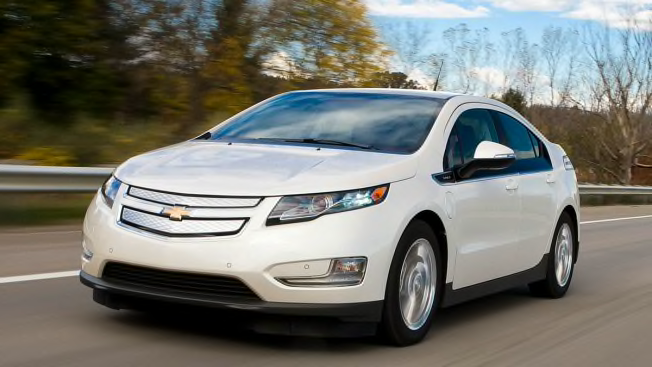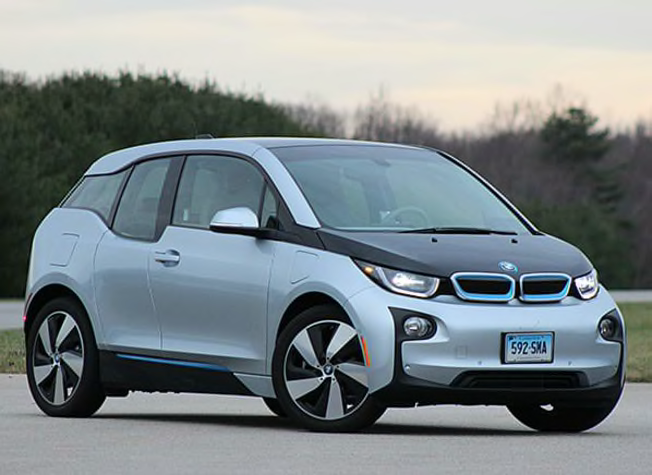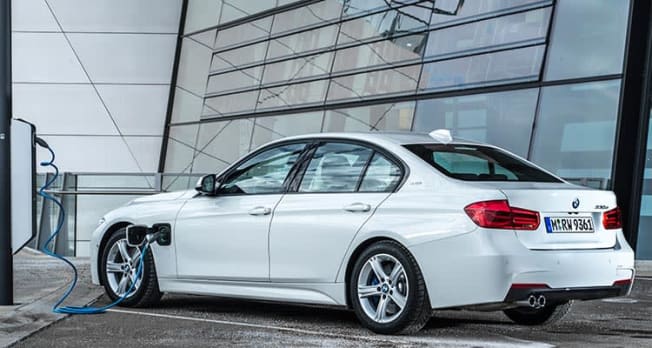Used Plug-In Hybrids With the Best and Worst EV Range and Fuel Economy
The technology has come a long way lately, so don’t get stuck with an outdated and inefficient model

If you’re interested in buying an electric car but worry about where to charge on long trips, a plug-in hybrid electric vehicle (PHEV) might be right for you. (Learn more in our hybrid/EV buying guide.)

Photo: Ford Photo: Ford
Will a Used PHEV Save You Money?
It depends on the car and how you drive it. You’ll want to look for a PHEV with a long electric-only range and good gas-only fuel economy. But PHEV technology has advanced a lot in recent years, so some older models have very short electric-only ranges—sometimes as little as 11 or 12 miles. As a result, they might not stay on electric power for the entire typical commute and could cost you more to fuel than a conventional hybrid or fuel-efficient gas-powered car.
“The key to getting the most out of a PHEV is remembering to plug it in every day,” says Chris Harto, senior energy policy analyst at Consumer Reports. “If you don’t plug it in, if it has a very short electric range, or if you tend to drive long distances, you’re better off buying a regular hybrid, which will usually be cheaper and get slightly better gas mileage when run on gasoline only.”
For example, once the 2020 BMW X3 xDrive30e SUV’s meager 18-mile electric range is exhausted, it gets only 24 mpg overall, according to EPA estimates. That’s 2 mpg less than the conventional 2020 BMW X3 xDrive30i’s EPA rating of 26 mpg.

Photo: Toyota Photo: Toyota
Do Used PHEVs Qualify for Federal Tax Credits?
Sometimes. Depending on your income, the cost of the vehicle, the age of the vehicle, the size of its battery, and how many times it has been resold, you might qualify for a federal tax credit of up to $4,000 on a used PHEV. The rules are complex, so check out our detailed guide to used EV and PHEV tax credits before you start shopping.
How Have PHEVs Changed Over the Years?
Those in the market for a used PHEV should look for a newer model because it might offer significant fuel savings and better performance compared with an older one, says Gabe Shenhar, associate director at Consumer Reports’ Auto Test Center.
“More recent iterations of PHEVs have longer, more robust electric propulsion thanks to bigger batteries, and more ability to drive on electric power even when operated as a hybrid,” he says. “They also benefit from smoother hand-offs between the electric and gas propulsion.”
If you were in the market for a Volvo XC60 PHEV, a 2019 model gets 17 miles on electric power and 26 mpg on gas, while the 2023 model gets 36 miles of electric range and 28 mpg on gas. Similarly, the Kia Niro PHEV gained 8 miles of electric range and 2 mpg as part of its 2023 redesign.
A 2022 study from the International Council on Clean Transportation found that in the real world, PHEVs consume between 42 and 67 percent more gas than the EPA estimates printed on window stickers, largely because they aren’t driven on electric power often enough. If you buy an older model with a short electric-only range, it’s more likely you’ll be using gas to get around, defeating the purpose of a PHEV. “Buying a PHEV and not plugging it almost daily is leaving money on the table,” Harto says.

Photo: Chevrolet Photo: Chevrolet
Are PHEVs Reliable?
The results of our reliability survey indicate that, in general, PHEVs are often less reliable than other kinds of cars, largely because they’re more complex than conventional hybrids or gas-only cars. But our survey results show that reliable brands tend to make reliable PHEVs, and brands that struggle with reliability tend to make less reliable PHEVs. The same goes for maintenance costs.
Are There Different Kinds of PHEVs?
If you’re shopping for a used car, the answer is yes. All new PHEVs on the market today in the U.S. are called “parallel hybrids,” in which the electric motor and gas engine work in parallel to power the drive wheels. But some older PHEVs, including the BMW i3, Chevy Volt, Cadillac ELR, and Honda Clarity, are called “series hybrids.” They use the gas engine to generate electricity, while the electric motor drives the wheels. In the case of the Volt, ELR, and i8, the series hybrid design makes for quick, EV-like acceleration. But the Clarity’s gas engine kicks in with a loud drone, and the i3 uses a tiny gas engine as a range extender that’s loud and needs frequent refueling.

Which Used PHEVs Have the Longest Ranges and Best Fuel Economy?
These cars and SUVs have EPA-estimated electric-only ranges greater than 25 miles and gas-only overall fuel economy above 30 mpg. Members can see additional information by clicking on the vehicle name, including CR’s reliability and owner satisfaction ratings.
2015-2021 BMW i3 with Range Extender*
Range: 72-126 miles electric + 74-83 gas
Gas-only MPG: 31-39
2013-2015 Chevrolet Volt
Range: 38 miles electric + 342 gas
Gas-only MPG: 37
2016-2019 Chevrolet Volt
Range: 53 miles electric + 367 gas
Gas-only MPG: 42
2020-2023 Ford Escape PHEV
Range: 37 electric + 483-493 gas
Gas-only MPG: 41-40
2019-2020 Ford Fusion Energi
Range: 26 miles electric + 584 gas
Gas-only MPG: 42
2018-2022 Honda Clarity Plug-In Hybrid
Range: 48 miles electric + 293 gas
Gas-only MPG: 42
2018-2022 Hyundai Ioniq Plug-In Hybrid
Range: 29 miles electric + 591-601 gas
Gas-only MPG: 52
2019-2023 Kia Niro PHEV
Range: 26-34 miles electric + 476-534 gas
Gas-only MPG: 46-48
2017-2022 Toyota Prius Prime
Range: 25 miles electric + 615 gas
Gas-only MPG: 54
2021-2023 Toyota RAV4 Prime
Range: 42 miles electric + 558 gas
Gas-only MPG: 38
*The i3 is designed to be used primarily as an EV, with a gas-powered range extender for longer distances.

Photo: BMW Photo: BMW
Which Used PHEVs Have the Shortest Electric Ranges?
These vehicles have EPA-estimated electric-only ranges under 15 miles, and none of them have standout gas-only fuel economy in their vehicle categories. We left off supercars and ultra-luxury models from Bentley, Ferrari, McLaren, and others.
2016-2018 Audi A3 E-Tron
Range: 16-17 miles electric + 384-413 gas
Gas-only MPG: 34-39
2016-2018 BMW 330e
Range: 14 miles electric + 336 gas
Gas-only MPG: 30-31
2016-2018 BMW X5 xDrive40e
Range: 14 miles electric + 526 gas
Gas-only MPG: 24
2016-2018 Mercedes-Benz C350e
Range: 9 miles electric + 338 gas
Gas-only MPG: 30
2017-2019 Mercedes-Benz GLC350e
Range: 10 miles electric + 340 gas
Gas-only MPG: 25
2016-2018 Mercedes-Benz GLE550e
Range: 10-12 miles electric + 448 gas
Gas-only MPG: 21
2018-2021 Mini Cooper Countryman All4
Range: 12-18 miles electric + 258-282 gas
Gas-only MPG: 27-29
2016-2023 Porsche Cayenne e-Hybrid
Range: 12-17 miles electric + 348-476 gas
Gas-only MPG: 18-22
2012-2015 Toyota Prius Plug-In Hybrid
Range: 11 miles electric + 529 gas
Gas-only MPG: 50
2017 Volvo XC90 PHEV
Range: 14 miles electric + 336 gas
Gas-only MPG: 25




















